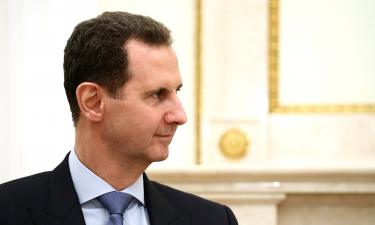New wording of chemical weapons disposal program
The state commission of the Russian Federation for the destruction of chemical weapons will consider the new wording of the program for the destruction of chemical weapons at its session on Friday in Moscow. It will be presided by commission chairman Sergei Kiriyenko, the Russian presidential plenipotentiary in the Volga Federal District.
After the state commission will consider the new wording of the program it will be submitted to the government session.
According to the information of the plenipotentiary's press secretary Sergei Novikov, the new wording of the program provides for increasing the financing on the part of Russia because of the actual cutting of the aid from the international community, first of all from the United States. As a result, the press secretary said, the procedure and the priorities of putting into operation the facilities for the destruction of chemical weapons will be revised.
"Earlier it was planned to start eliminating chemical weapons in 2005 at a plant in the town of Shchuchye in the Kurgan region (the Trans-Ural area). But now it has become clear that the plant will begin functioning much later. In 2005, it is expected that the plant in Kambarka in the Udmurtian Republic (Southern Ural area) will be put into operation," Novikov explained.
The first stage of the destruction of the war gases of the first category of danger was completed on April 26, 2003 at the plant in the township of Gorny in the Saratov region (the middle reaches of the Volga River area). More than 400 tons of yperite, or 1 percent of Russia's entire stock of chemical weapons, were destroyed.
In 1997, Russia ratified the international Convention on the Prohibition of the Development, Production, Stockpiling and Use of Chemical Weapons and on Their Destruction.
According to this convention, the Russian Federation committed itself to destroy all its stocks of chemical weapons which it had inherited from the Soviet Union. Under the convention, the destruction of chemical weapons is carried out in four stages. The first stage - the destruction of one percent of chemical weapons; the second stage - 20 percent, the third stage - 45 percent, and the fourth stage - 100 percent of the chemical weapons stocks.
International aid in 2002 amounted to $14 million, in 2003 - to $60 million; in 2004 it is expected at $310 million.
The total amount of the stocks of chemical weapons (war gases) in Russia is 40,000 tons which are kept in seven arsenals: 15.9 percent in Kambarka, 2.9 percent- in Gorny. 14.2 percent - in the township of Kizner (Udmurtian Republaic), 17.4 percent - in the township of Maradykovsky, 18.8 percent in the town of Pochep (Bryansk region), 17.2 percent - in the township of Leonidovka (Penza region) and 13.6 percent in the town of Shchuchye (Kurgan region).
Subscribe to Pravda.Ru Telegram channel, Facebook, RSS!





